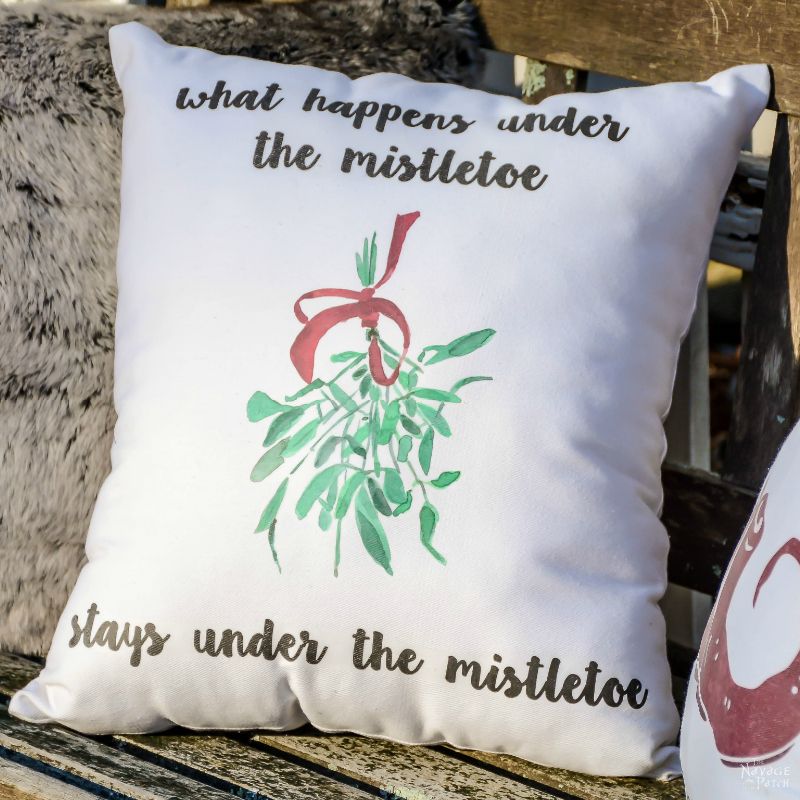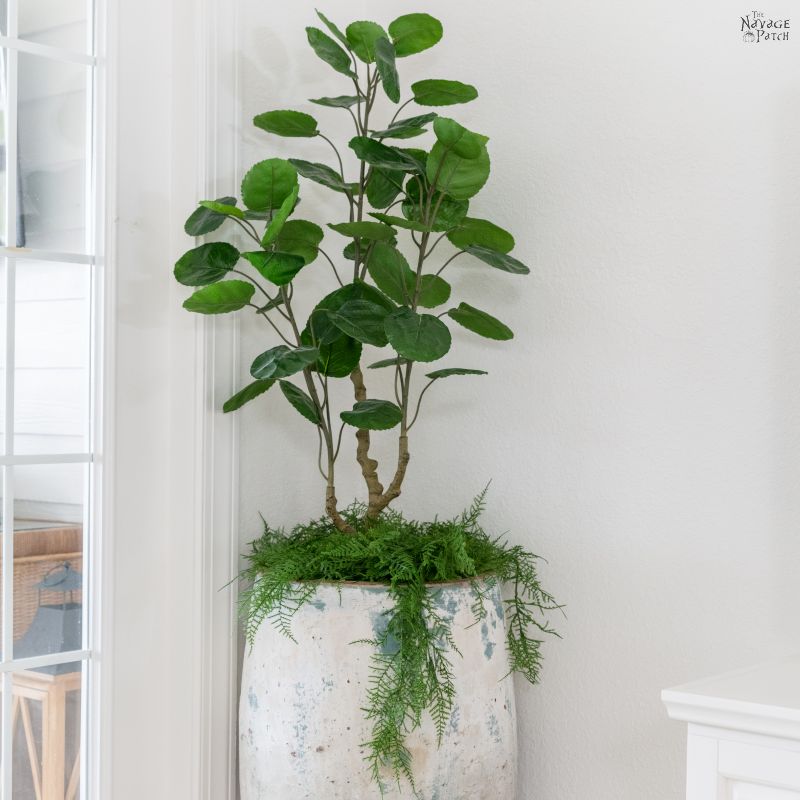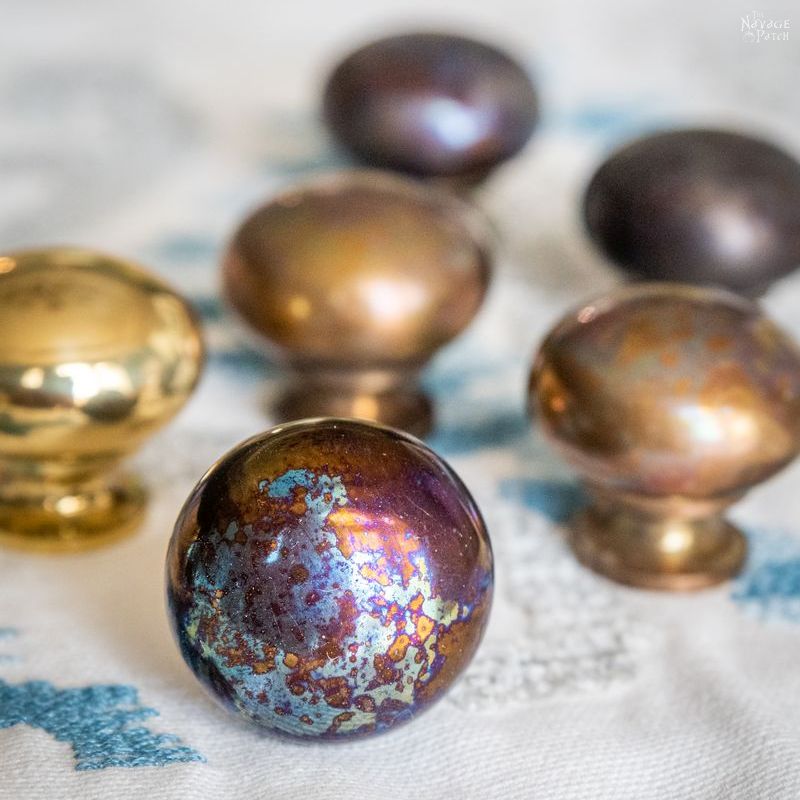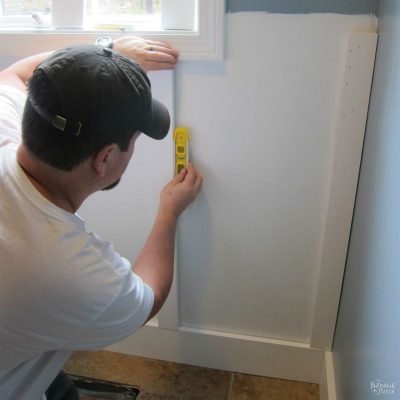Image Transfer to Fabric
Image transfer to fabric is a breeze with heat transfer paper! Learn how to use iron on transfer paper for quick & easy image transfers to fabric.
When I first started crafting, image transfer to fabric gave me a lot of difficulty. Although I had success with several methods I found online, I still thought it was such a hassle just to do a simple image transfer. Besides, none of those methods were reliable when it came to washing the fabric: either the image would totally wash off or the ink would bleed all over the fabric. After a lot of research, I found the solution in heat transfer paper!

Heat Transfer Paper
Since I don’t have a heat press, my next step was to find the type of paper that I could use with my iron, yet still achieve excellent results comparable to a heat press. After a week of research and learning about all the products out there, I finally found one that looked promising. It is not only the cheapest but also one of the best, as it is used for commercial applications. Besides, they have different sizes of heat transfer paper including 11″ x 17″ for those who have large format printers. Here’s where you can find the particular brand that I use.
Here is my method for image transfer to fabric using iron on transfer paper:
Image Transfer to Fabric – Print Image
I start by printing my reversed image to the heat transfer paper.
Don’t know how to reverse an image? No problem! I wrote an easy 3-step tutorial for reversing an image to help you out!
Then I cut the image into a manageable size.

Image Transfer to Fabric – Prepare the Fabric
Before starting the image transfer, I clean the fabric with a lint roller. This step is important, because anything on the fabric gets trapped under the transferred image, so you need to have lint-free fabric if you want your end product to look great.
Once the fabric is lint-free, I prepare the surface where I will be ironing. Two important notes here:
- You need a smooth, hard surface: I use a piece of MDF board for that. Although the instructions of the iron-on transfer paper say to place a pillow cover on the hard surface, that is not necessary if you are using a smooth MDF board.
- It is better to have that smooth hard surface below your waist level, because you need all the pressure you can give when ironing.
Next, I lay my fabric down and give it a quick ironing to get rid of any creases. Then I place the image face-down on the fabric.

Image Transfer to Fabric – Iron the Image
I empty the water from my iron, as dry heat is needed for better bonding. Then I put my iron on its highest setting and start ironing over the entire image. I make sure to press every inch of the image, sliding the iron first up-and-down then side-to-side. For small images, I keep pressing for at least 30 seconds. For big images, I press for 2 minutes.

After I finish pressing, I wait for the iron on transfer paper to cool a little to be able to hold it, then I start peeling off the backing paper…

And the mission is complete!



Image Transfer to Fabric – Washing
Although washing and ironing instructions are usually given together with the Heat Transfer Paper, I want to note that you need to turn your garment inside-out before washing, and make sure you use the same setting as for delicates/wool/hand wash. Also please remember never to iron the transferred image directly, as it will stick to your iron.
Handan, xo











How do you avoid scorching the fabric if you are pressing down on the highest setting for at least 30 seconds.
Hi Annie, the iron is not staying in one place for 30 seconds. I keep moving it around while applying as much pressure as I can. Hence I wrote “I make sure to press every inch of the image, sliding the iron first up-and-down then side-to-side.” So the times I gave in the post were the total application times. Meaning small images take at most 30 seconds, while bigger images might take longer as you need press a bigger area.
Also please keep in mind that the fabric I am using is cotton, not silk or any other fabric which would need light ironing setting
Also I use non stick baking paper over the top of the paper transfer sheet. Never had a scorch yet
That’s an awesome hint – thank you! I’ll definitely try that with my next image transfer! 🙂
Do you use computer ink or a special ink?
Hi Cherie, I have two different types of printers: One is inkjet and the other is laser printer. With image transfer I always use my inkjet printer which uses normal printer ink. And the paper for inkjet printer is this: http://amzn.to/2BoQOQS It is so easy to use and I always had brilliant results with it.
If you have laser jet printer, then you need use heat transfer papers for laser jet printers. Amazon has this one: http://amzn.to/2BoI7X0 But as I never used that one, I don’t really know how good it works.
Thanks so much for this – super helpful! Is cutting out the images necessary? I saw in one video that they HAD to cut out the image as otherwise the white background from the paper would also transfer – that doesn’t seem to be the case for you from the photos, just a positioning aid?
Also – how do the images hold up after washing?
Thanks!!
Hi Zara, this transfer paper has a transparent film, so it looks like a slight haze if you don’t cut the images to size. But on a white or light color fabric you can’t really see it all. Images hold up great after washing. This transfer paper pretty much gives the results of a commercial image transfer – so it is that good!
Thanks so much, really appreciate the feedback!!
Dark paper for dark fabric. Light paper for white
Hi.
I don’t understand when u say do not iron the image directly? Do u put something between the image and the iron?
Regards
Dudu
SA
Hi Dudu, sorry if that part was a bit confusing. When you start using your garment that has a transferred image, either turn it inside out when ironing, or put a thin cotton cloth in between the iron and the transferred image when ironing. If you put your iron directly on the transferred image, then there is a big chance that image will stick to your iron.
Thanks for sharing regarding the paper it sounds like it will hold up in the printer; the many times I’ve tried this finding a program that does reverse printing stopped me can you share what you used? Thanks!
Hi Pat, I prepared a post that shows how to reverse an image and you can use that tutorial:
https://www.thenavagepatch.com/how-to-reverse-an-image/
However, if you don’t have Microsoft Publisher on your computer, then you can use the online free photo editor named “LunaPic”. Here is the link for that online photo editor:
http://www125.lunapic.com/editor/
Once you upload your photo there you will see “Adjust” tab as the fourth tab from top left. Click on “Adjust” and it will bring a drop down selections for you. Find “Mirror” and click on it. That will reverse your image. Once your image is reversed click on “File” tab and save your reversed image.
I hope this will help!
Do you sell the paper, I have had the picture copied in reverse but I can not find the iron on paper in a large roll I need at least 28 x 40 sheet. I am going to do stump embroidery for a quilt. Can I send the fabric and picture to you to be printed.
Thank you in advance for a response.
Pat turko
pattyposie@sbcglobal.net. or babylockquilter@hotmail.com
Hi Pat, we don’t sell anything here. We just do projects and write about them. You may want to check out the following link, as they sell large-format transfer paper. Good luck! https://www.transferpaperexperts.com/inkjet-transfer-paper-inktra-rolls
Is this method of transfer one where the image has the appearance of plastc and cracks after a couple of uses?
Thanks for sharing.
Hi Lynn, it does feel like a very thin vinyl or faux leather perhaps, but not really like plastic and it definitely doesn’t crack. I mean I’ve been using one of those pillows constantly for almost three years now and nothing happened to it – still looks like brand new.
I hope this info helps!
Can you use these transfers on wood and different things? I just joined an trying to figure out how it works. I am so excited about this I love stuff like this!! Can’t wait to get started. If their are videos I can watch will you share that with me please.
Debra
Hi Debra, these transfer papers will only work for fabric. But you can transfer any image to any hard surface with the method we show in our “image transfer to hard surfaces” post: https://www.thenavagepatch.com/image-transfer-to-hard-surfaces/
I hope this helps! 🙂
I love your DIYs, I subscribed as a VIP, signed in and I’ve even donated to your website – but I find it hard sometimes to find the printables. I’m wondering where the mistletoe pillow print is?
Hi Tracey, you can find all of the pillow designs in the Christmas section of the VIP Patch! As they were among the very first printables we offered, they are towards the bottom of the Christmas section. So just scroll down and you’ll all of the four designs 🙂
CAN THESE USED FOR TEE SHIRTS???
Hi Shar, yes, these can be used for t-shirts 🙂
Does this method leave a plastic looking image like a TShirt print does?
Hi Felicity, the transfer paper I used is for hot peel and if you peel the paper while it’s hot you will not end up with vinyl-like feel image on the fabric. However, I used the cold peel method with this paper, meaning that I waited for the paper to cool down and then peeled it. Therefore I ended up with images that had vinyl-like feel when touched.
We also have another post where we explain both methods and compare the results. I suggest you to check that post to read more about both methods: https://www.thenavagepatch.com/easy-diy-patriotic-pillows-with-free-printables/
I hope this info helps! 🙂
Love this! Y’all have the coolest projects ever!
Could you use this for a lighter image on a darker shirt?
I tried to find the heat transfer paper by clicking where indicated but the message shown states that the site cannot be found.
Link no longer available for iron on paper you used; can you please tell me the brand you used. I am making Christmas stocking for our 19 kids (includes grandkids) and I used avery paper that I had on hand however when I ironed it on the edges would not affix to the cotton fabric, it would roll up along the edges no matter how hot or how long I tried ironing it.